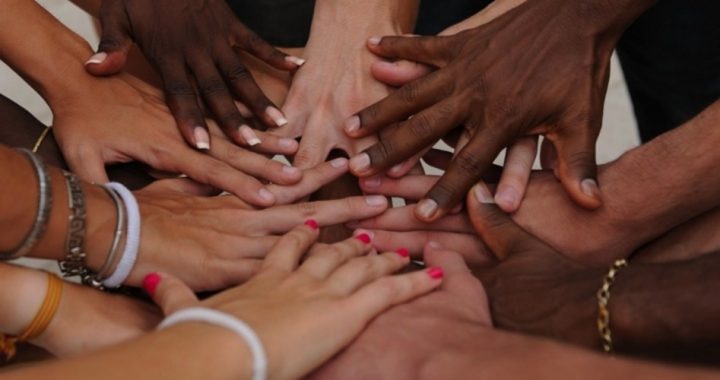
In an article published by Voice of America on March 31, VOA’s Senior Analyst Victor Morales cited U.S. Census Bureau estimates that by 2045, the United States will have a population of approximately 389 million people. Furthermore, for the first time in the nation’s history, the majority of people living in the United States will be non-white.
In his article, Morales quoted extensively from William Frey, a well-known demographer who is a senior fellow in the Brookings Institution Metropolitan Policy Program and the author of Diversity Explosion: How New Racial Demographics Are Remaking America.
Among Frey’s statements:
This new diversity boom that we’re seeing right now will be every bit as important for our country in the decades ahead as the baby boom [people born between 1946 and 1964] was in the last half of the 20th century.
We know that the baby boom has changed the country in lots of ways — popular culture, changing values about all kinds of social issues, families, women’s roles and politics. And I think this diversity boom is going to have just as big of an impact. We’ll be a very different country and we’re only just beginning to see the start of it.
As for what impact these demographic changes will have on American life, it is important to remember that “non-white” is no more a unified segment of the U.S. population than “white.” For example, Americans of Spanish ancestry (“Hispanics”) may classify themselves as either white or non-white. In a report published by the U.S. Census Bureau, “Overview of Race and Hispanic Origin: 2010,” it was noted: “People of Hispanic origin may be any race. For the 2010 Census, a new instruction was added immediately preceding the questions on Hispanic origin and race, which was not used in Census 2000. The instruction stated that “For this census, Hispanic origins are not races” because in the federal statistical system, Hispanic origin is considered to be a separate concept from race.”
In the 2010 census, 53 percent of respondents identifying as Hispanic or Latino listed their race as “White,” 2.5 percent listed their race as “Black or African American,” 36.7 percent listed themselves as “some other race,” and six percent selected “two or more races.”
But the report noted, “The racial distribution of the non-Hispanic population, on the other hand, was mostly White alone (76 percent), Black alone (15 percent), and Asian alone (six percent).”
It is apparent, therefore, that in a land of diversity, American Hispanics are diverse within themselves. Morales writes that Hispanics now total about 52 million people and “are expected to remain the largest minority group in the United States for decades to come.” He also notes that despite the well-publicized “influx of undocumented immigrants from Latin America to the United States during the past 20 years, the rise in the number of Hispanics is driven mainly by birth.”
Among the other demographics groups classified as “non-white,” note Morales, are Asians, who number more than 16 million, and are America’s fast growing minority group, and more than 40 million African Americans, who make up the nation’s oldest ethnic minority group.
Considering that African Americans have lived in the United States since before its founding, are found in all levels of the socio-economic stratum, and are spread across wide geographic areas, it seems difficult to predict what impact the growth of this group might have on American culture.
Gathering data from census reports, Morales notes that by 2045, the population of Hispanics, Asians, and African Americans is expected to grow from more than a third of the population to a little more than half.
The article quotes American Enterprise Institute political scientist Charles Murray as observing:
The degree of cultural diversity that this introduces to this country is rather like the cultural diversity we had in the 19th century, and for that matter in the 18th century at the time of founding.
We used to have radically different ways of life among different groups in this country. And the 20th century was something of an anomaly in this regard as we saw an increasingly homogeneous culture with the rise of mass media. In many ways, I think the America of the 21st century with its increased cultural diversity is going to look familiar to historians of America. And in that respect, it’s as American as apple pie.
Morales also quoted Pitzer College political scientist Adrian Pantoja, described as an expert on immigrant and Hispanic politics in the United States, who said, “To some degree, immigrants change America. But America also changes immigrants.”
Pantoja described the path of Hispanic immigrants as being very similar to the immigrants who arrived at Ellis Island in the 19th century:
The strengths of the English language, American culture and symbols and history and values — those are adopted very quickly among immigrant populations. There’s overwhelming data that shows that by the second generation, the Spanish language is practically gone; the children of immigrants are English-dominant. By the third generation, the Spanish language is essentially nonexistent. So those assimilationist forces have been alive and well since the founding of this country.
Pantoja’s predictions, if accurate, should offer encouragement to those who fear that the increase in the Hispanic and other minority population may portend a future with a majority electorate that supports liberal Democrats for public office.
While it is true that the Democratic Party has always worked hard among newly arrived immigrants and their first-generation offspring — building a coalition that elected Franklin D. Roosevelt to the White House four times and ensured the continuation of FDR’s socialist New Deal programs — succeeding generations of these same immigrant families were less reliable Democratic voters. As they went to college, moved up the corporate ladder, and moved to the suburbs, many descendants of 19th-century immigrants became more conservative politically and registered as Republicans. (Not that Republican necessarily means conservative, but it does show a change of attitude and a willingness to consider other political philosphies.)
The key to developing ethnic minorities into an informed electorate is the same as it is for other, more established groups of Americans — better education in constitutionalist principles. Since our public schools and major universities generally fail in this task, constitutionalists must rely on other tools, such as private or home schooling, small private conservative colleges, and freedom-affirming journals such as The New American.
Related articles:
Will the Coming Non-white Majority Kill Conservatism?



